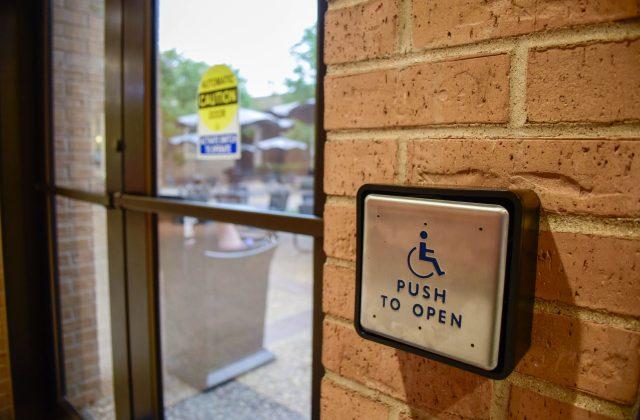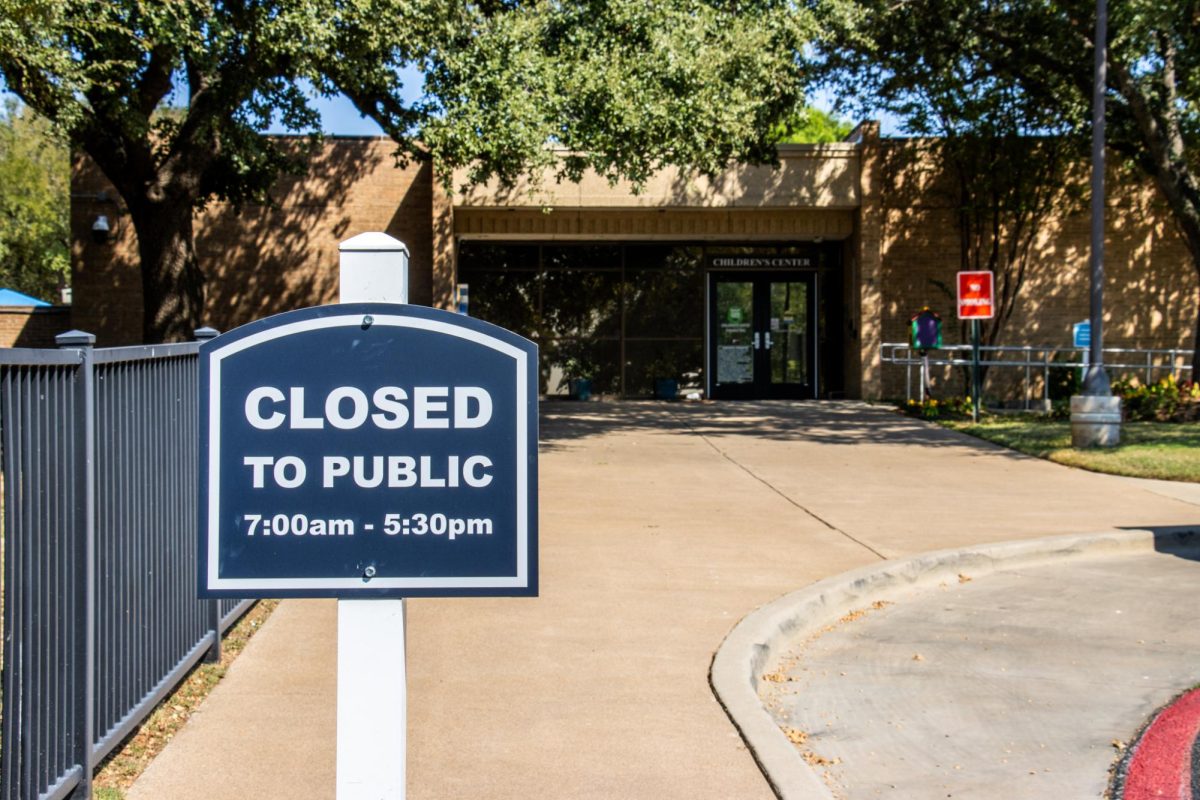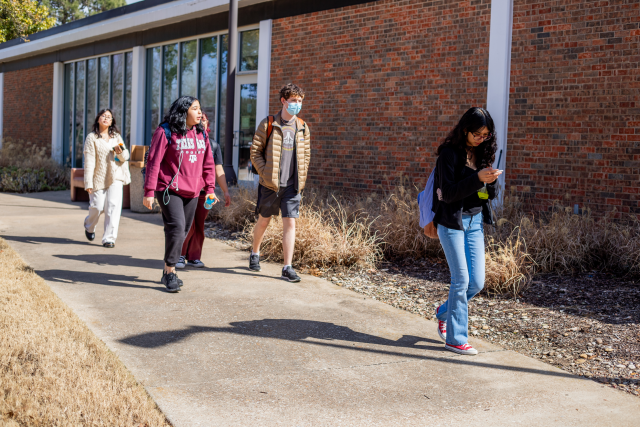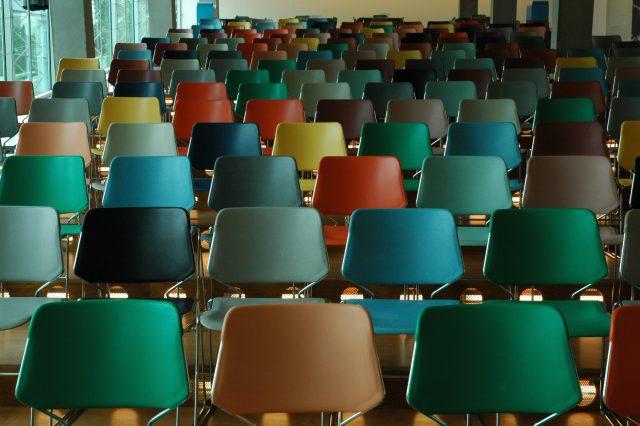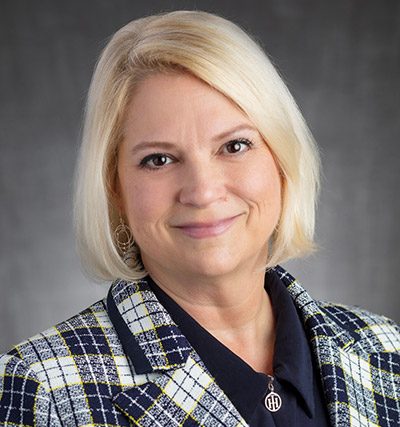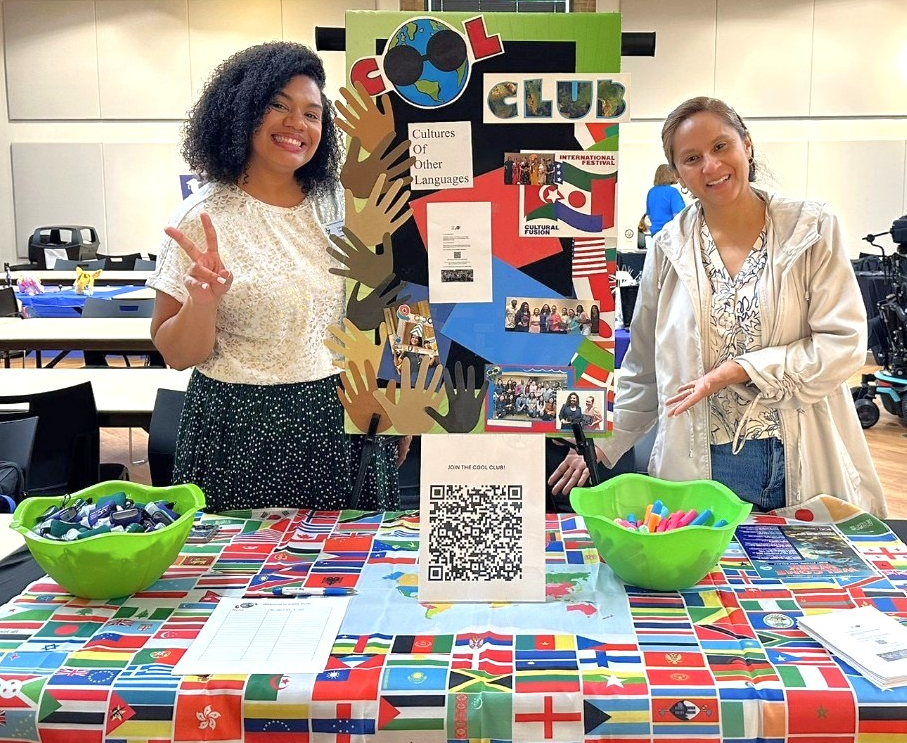KEYLA HOLMES
campus editor
keyla.holmes@my.tccd.edu
Walking around NE Campus to get to class can be tiring. For those with accessibility challenges, temporary or long term, navigating campus can become a stressor.
“It’s so difficult going up the hill,” NE student Tori Hillard said. “I’m literally out of breath and sweating afterwards.”
Hillard recently fractured a bone in her foot. She’s unable to walk and uses a scooter to rest her leg on. When it comes to getting to class, her injury poses a challenge.
“I’m very tired after needing to scooter from different places,” she said.
Kimberly Eason, NE director of Student Accessibility Resources, said that for students like Hillard, utilizing a golf cart isn’t an option. But parking closer to a building may be.
“We cannot transport students for liability reasons, but they may be able to get a temporary accessible parking placard from TxDOT”, she said. “That way they can park in accessible or handicap parking while they’re going through their recovery or surgery.”
Eason said for some circumstances, though, SAR can get involved.
“The student needs to work with the instructor or talk to them first, and then they can do what they can to help the student,” she said. “Now if it’s something beyond the instructor’s control, like they broke their dominant arm or their dominant hand, and they need some assistance with taking notes, the instructor can reach out to us and SAR will help provide some services.”
Eason said there is a difference between those experiencing a temporary accessibility challenge and those who are protected under the Americans with Disabilities Act. A temporary impairment is considered something that lasts six months or less.
For students who have challenges that are permanent or chronic, Eason said they need to contact the SAR office.
“In high schools or public schools, it’s the school’s responsibility to identify students who may have some kind of disorder or condition where they need assistance,”she said. “In college, it’s the student’s responsibility to self identify. We can advertise and try to reduce the stigma by encouraging faculty to refer students, but it still has to be the student’s option.”
For more information regarding these resources, students should visit SAR’s webpage for more in-depth guidance.
Hillard said she’s thankful her instructors have been supportive.
“They have been very kind to me and have helped me with anything I need,” she said.
For students who may feel nervous about getting around due to an accessibility challenge, NE student Daphne Garcia suggested using a rolling backpack.
“I feel like that would be helpful for carrying your books,” she said.
Garcia mainly stays in one building for all of her classes. For those who have to walk to different buildings, she said knowing where everything is can be advantageous.
“Carrying a map and trying out different routes could also be helpful,” she said.
Eason said it’s all about having a plan.
“If they’re feeling nervous or uncomfortable, we’ll be glad to sit down with them
and talk about a plan that they can have for themselves,” she said. “Let them know where the elevators are, and if they have a friend who’s willing to help carry their stuff, that could be helpful.”
























